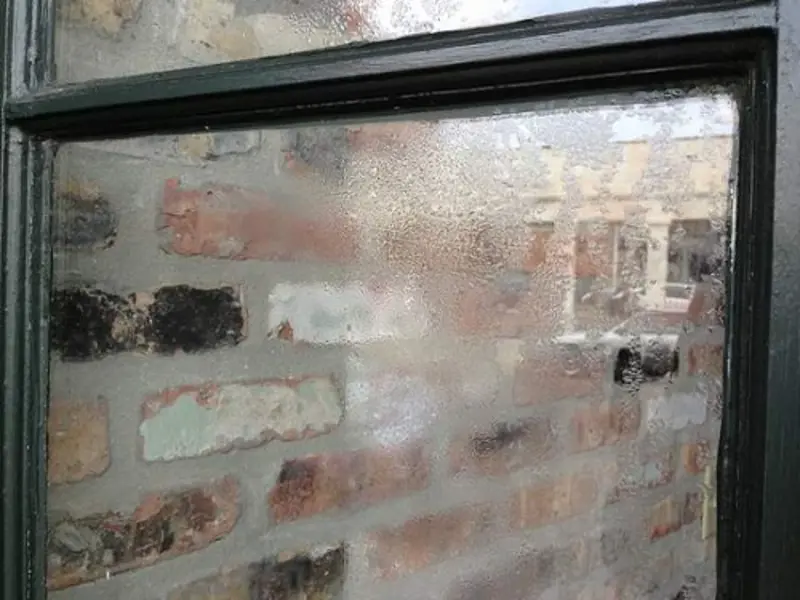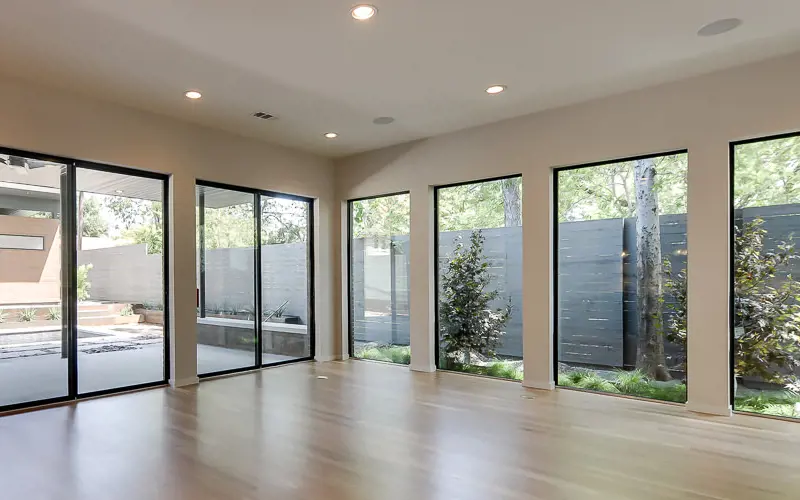
Problems Caused by Condensation on Aluminum Windows
Condensation on window glass itself is not a problem. In fact, condensation on glass is very common and has to do with humidity levels, air flow, and temperature levels. Unfortunately, excessive condensation can eventually lead to some big problems. Typically, we see issues arise more when aluminum window frames are concerned. Read on to learn more about the problems caused by condensation on aluminum windows.
Use the links below to skip ahead:
- What causes condensation on windows?
- Problems caused by condensation on aluminum windows
- How do you reduce humidity in homes?
- Signs that condensation is already causes problems
- Addressing window condensation problems
What Causes Condensation on Windows?
Condensation occurs when warm, moist indoor air collides with a cooler surface. And since glass (primarily on windows) can be one of the coldest materials in your home, it attracts excess water vapor and it condenses there first. When excessive condensation begins to form water droplets it is called window sweating.
Window sweating is a common occurrence in aluminum windows sense they readily transfer heat. When it’s cold outside, heat from inside the home is drawn out as cold air from hits the home. Windows with high thermal transfer are less likely to prevent heat from escaping the home. Aluminum windows are quick to get cold and transfer heat out of through the metal frame. When the warm air hits the glass and aluminum window frames it becomes cold and loses the ability to hold water. The air then releases moisture and is seen as water and fog on the window.
High thermal transfer is why aluminum windows need to have thermal breaks. Thermal breaks act as barriers against thermal transfer. Windows made from composite materials like vinyl or fiberglass are less likely to experience window sweating because they have lower thermal transfer. In cold seasons, windows with lower thermal transfer take longer to become cold unlike aluminum windows which quickly become cold.
Problems Caused by Condensation on Aluminum Windows
The three biggest and most common problems caused by condensation on aluminum windows are:
- Mold
- Rot
- Drywall damage
It’s important to prevent condensation to avoid any of these issues. Unfortunately, it’s not always easy to tell if condensation is beginning to cause problems around your window. In other parts of your home you may see severe stains on your walls especially if you’re dealing with something like a leaky roof. Water problems around windows sometimes go unnoticed because the problems are growing where they can’t be seen.
Sometimes these deeper problems go unnoticed until windows are being replaced. Years of moisture damage cause the drywall and wood around the window to expand and contract. Excess moisture and evaporation eventually lead to rot in the window sills and crumbling in the drywall.
It’s helpful to understand the type of problems condensation can create ahead of time so you can communicate any concerns to your window retailer and installer before replacing your windows. Although existing problems can’t always be identified from an exterior view communicating concerns may help you from incurring unexpected costs later on in the project.
Your window retailer can also make product recommendations based on the climate where you live. Typically, composite windows made from vinyl or Andersen’s Fibrex perform well in any climate and condensation is less of a concern.
How do you reduce condensation in homes?
Reducing condensation starts by limiting the amount of humidity in the home. The less humidity in the air the less likely it is to condense on the windows. There are several changes you can make to reduce condensation without worrying about measuring for humidity levels.
In the shower
- Reduce shower times and temperatures
- Run the bathroom fan during the shower and for 15-20 min after
- Use bathmats to soak up moisture in the room
In the kitchen
- Use pan lids when cooking
- Turn on the cooker hood to extract moisture
Laundry
- Avoid drying laundry on a rack inside when the temperature outside is cold
Other
- Check for water leaks around the home
- Make sure vents are installed correctly and lead outside
- Choose indoor plants that reduce humidity (Peace Lily, Boston Fern, Spider Plant, Cactus, etc.)
- Invest in a high efficiency and appropriately sized dehumidifier
- Watch for broken seals on windows and doors
- Wipe down condensation on windows and sills
Signs Condensation is Already Causing Problems
Be aware condensation in houses can lead to problems. While the problems aren’t always visible there are a few things you can watch for.
- Dampness in the window sill
- Dampness in the walls surrounding windows
- Cracking, peeling, or bubbling of paint in the drywall or window sill
- Black dots around the window frames or curtains
- Rust around the window frames
- A musty smell in the area near windows
Addressing window condensation problems
Three ways to address window condensation problems are:
- Replace the window
- Replace the glass in the window
- Dehumidify the room
Replace the window
If you have older aluminum windows or windows with single pane glass, choosing to update your windows to one that’s made for efficiency can be a great option. We’ve already mentioned vinyl, Fibrex, and fiberglass as good alternatives, you can learn more about window materials on our post: Pros and Cons of Each Window Material
When replacing a window you’ll want to look for a window with low U-value, if condensation is the primary concern you’ll want to look for a window with low U-value. Windows with low U-value are less susceptible to condensation.
Replace the glass
If your window frames are in good condition but they inefficient glass, consider changing the glass unit to a high-performance insulted glass unit. A good glass unit has low-emissivity coatings, efficient spacers and desiccants.
Dehumidify
If your windows are in good condition consider addressing humidity issues in the home by investing in a dehumidifier. Condensation can cause problems but condensation is actually a symptom of humidity and that’s another home problem that needs to be addressed. The folks at ecoHOME recommend
- Limiting the amount of humidity being produced in the home or entering it.
- Ventilating the home to remove excess moisture.
- Dehumidify the air in the home to bring the relative humidity below 60%.
- Heat and insulate homes evenly to try to prevent cold spots that provoke condensation.
Fortunately, there are ways to reduce condensation around windows and humidity in the home. If your window is developing condensation between the glass there is actually a problem with the seal around the glass. To learn more condensation and seal failure check out our post on: Why do my windows have foggy glass?
Oops!
We don't currently serve your area but do want to help you plan your project. Try our Build & Price tool to get an idea of window & door costs within DFW. Your area may be higher or lower but at least you'll have some idea of the price.
Thanks for stopping by.







